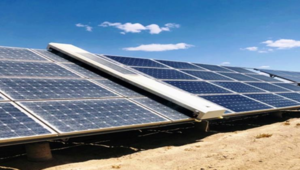La pioggia ha un impatto significativo sulla pulizia della superficie del componente, con più precipitazioni che portano a una pulizia più approfondita. Questo effetto è più pronunciato quando i componenti sono inclinati, mentre i componenti non inclinati mostrano un comportamento incoerente.
L'acqua piovana non è sempre sufficiente a lavare via lo sporco.
Le precipitazioni naturali aiutano sicuramente a rimuovere polvere e sporcizia, ma affidarsi esclusivamente alla pioggia non è sempre sufficiente. Mentre i pannelli possono sembrare puliti dopo una tempesta, la pioggia può lasciare residui non immediatamente visibili.
L'acqua piovana contiene solitamente piccole quantità di sporco e altre particelle, che possono accumularsi in aree in cui l'acqua piovana non arriva a sufficienza. Una sottile pellicola di tali residui potrebbe sembrare insignificante, ma se lasciata accumulare, può ridurre significativamente l'efficienza dei pannelli solari e persino causare l'effetto piastra calda, con conseguenti danni.
Inoltre, l'acqua piovana è meno efficace nella pulizia dei pannelli solari montati orizzontalmente.
L'acqua piovana non riesce a rimuovere efficacemente le macchie ostinate o lo sporco più ostinato.
L'acqua piovana da sola non è sufficiente a pulire gli escrementi degli uccelli e le macchie ostinate, che richiedono una pulizia manuale.
Pioggia leggera e acquazzoni intermittenti possono aggravare l'inquinamento, facilitando l'accumulo di ulteriore polvere.
